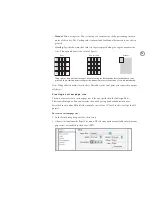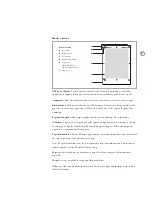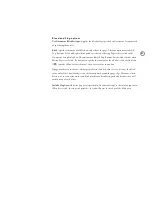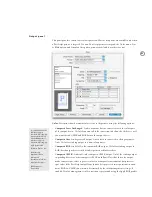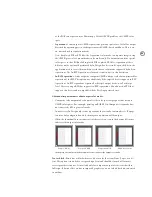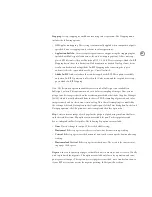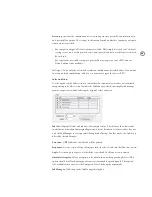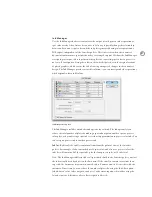
90
enough for proper trap creation. Spot inks that are not easily simulated using process inks,
however, may need their ND values adjusted so that the trapping engine traps them correctly.
By typing new values, you can ensure that an ink that is observed as darker or lighter is
perceived that way in InDesign; the appropriate trap placement is then applied automatically.
Changing the neutral density for a spot color only affects how that color will trap. It does not
change the appearance of that color in your document.
Note:
Neutral Density values should not be changed without consulting the press opera-
tors. The default values are appropriate for most jobs using standard inks. You may want to
note the current values before changing them, because there is no way to reset them to the
defaults after they are changed (except for clicking Cancel in the Ink Manager). If you need
to reset the neutral density values to their defaults, use the settings in the following table.
D e f au l t n e u t ra l d e n s i t y s e t t i n g s
Process Cyan.................................................0.61
Process Magenta ........................................0.76
Process Yellow ............................................. 0.16
Process Black.................................................. 1.7
To change the default neutral density settings, do so when no documents are open. Do this
by choosing Ink Manager from the Swatches menu, because you cannot choose the Print
command when no documents are open.
You can enter neutral density values within the range of .001–10. Use the following guide-
lines for adjusting neutral density values:
•
Metallic and opaque inks.
Metallic inks are usually darker than their CMYK equivalents,
while opaque inks obscure any ink beneath them. In general, you should set the density
values for both metallic and opaque spot colors much higher than their default values to
ensure that these spot colors won’t spread. It’s also a good idea to set the metallic density
to a higher value than that of Black so that Black does not spread into the metallic spot
color.
•
Pastel inks.
These inks are normally lighter than their process equivalents. You may want
to set the density value for these inks lower than their default values to ensure that they
do not spread into adjacent darker colors.
•
Other spot inks.
Some spot colors, such as turquoise or neon orange, are significantly
darker or lighter than their CMYK equivalents. You can determine whether this is the
case by comparing printed swatches of the actual spot inks to printed swatches of their
CMYK equivalents. You can increase or decrease the spot ink’s density value as needed.



